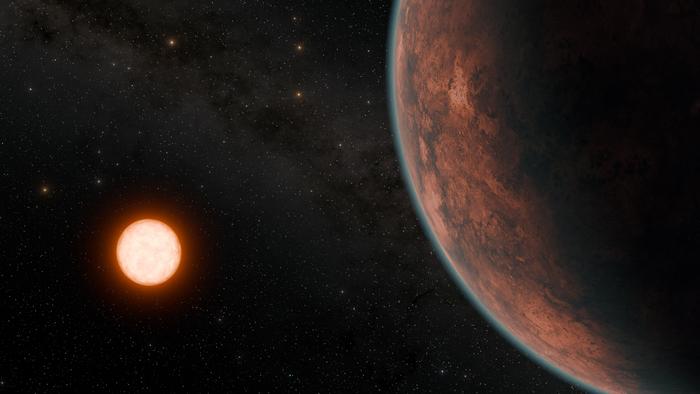A rare and tantalising discovery has been made by astronomers who have found an Earth-like exoplanet, named Gliese 12 b, orbiting its host star 40 light-years away. This potentially habitable world, comparable in size to Venus, may be just a little warmer than our own planet, with an estimated surface temperature of 42°C (107°F).
The Quest for Habitability
The key to establishing Gliese 12 b’s habitability lies in determining whether it has an atmosphere. It could have an Earth-like atmosphere, a Venus-like atmosphere that led to a runaway greenhouse effect, no atmosphere at all, or perhaps a different kind of atmosphere not found in our solar system. Answering this question is crucial, as it would reveal if Gliese 12 b can maintain temperatures suitable for liquid water – and possibly life – to exist on its surface.
Shishir Dholakia, a doctoral student at the Centre for Astrophysics at the University of Southern Queensland in Australia, co-led a research team with Larissa Palethorpe, a doctoral student at the University of Edinburgh and University College London. Dholakia explained, “Atmospheres trap heat and – depending on the type – can change the actual surface temperature substantially. We are quoting the planet’s ‘equilibrium temperature’, which is the temperature the planet would be if it had no atmosphere.”
Bridging the Gap Between Earth and Venus
Gliese 12 b’s significance lies in its potential to help reveal whether the majority of cool stars in our Milky Way galaxy are capable of hosting temperate, habitable planets with atmospheres. Palethorpe added, “It is thought that Earth’s and Venus’s first atmospheres were stripped away and then replenished by volcanic outgassing and bombardments from residual material in the solar system. The Earth is habitable, but Venus is not due to its complete loss of water. Because Gliese 12 b is between Earth and Venus in temperature, its atmosphere could teach us a lot about the habitability pathways planets take as they develop.”
The researchers, along with another team in Tokyo, used observations by NASA’s TESS (Transiting Exoplanet Survey Satellite) to help make their discovery. Masayuki Kuzuhara, a project assistant professor at the Astrobiology Center in Tokyo, who co-led a research team with Akihiko Fukui, a project assistant professor at the University of Tokyo, said, “We’ve found the nearest, transiting, temperate, Earth-size world located to date. Although we don’t yet know whether it possesses an atmosphere, we’ve been thinking of it as an exo-Venus, with similar size and energy received from its star as our planetary neighbour in the solar system.”
Gliese 12 b’s host star, a cool red dwarf called Gliese 12, is almost 40 light-years away from Earth in the constellation Pisces. The exoplanet’s discovery has been published today in the Monthly Notices of the Royal Astronomical Society, and it is being hailed as a potential target for further investigation by NASA’s £7.5billion James Webb Space Telescope. As Michael McElwain, a research astrophysicist at NASA’s Goddard Space Flight Center in Greenbelt, Maryland, and a co-author of the Kuzuhara and Fukui paper, stated, “To better understand the diversity of atmospheres and evolutionary outcomes for these planets, we need more examples like Gliese 12 b.”


